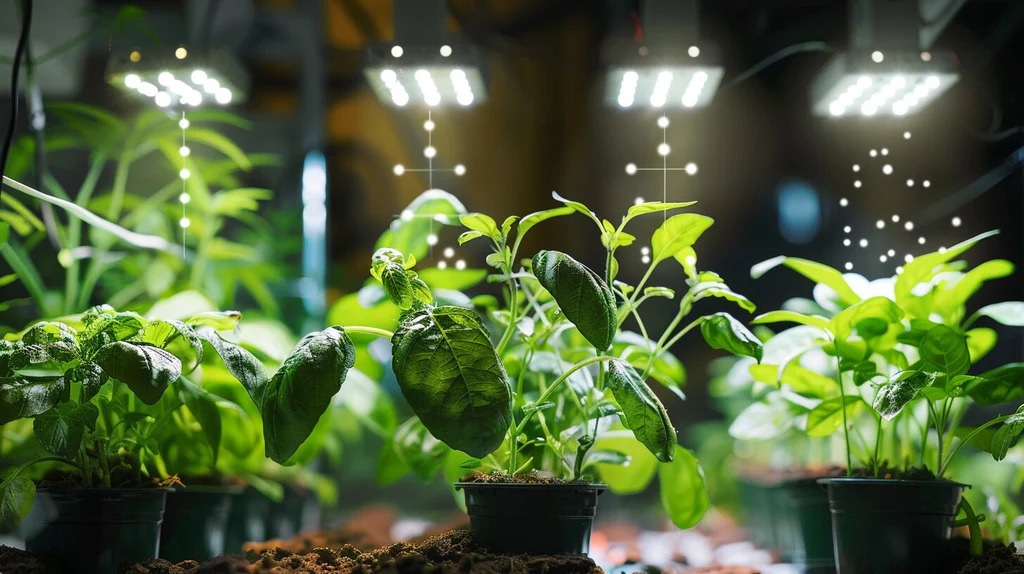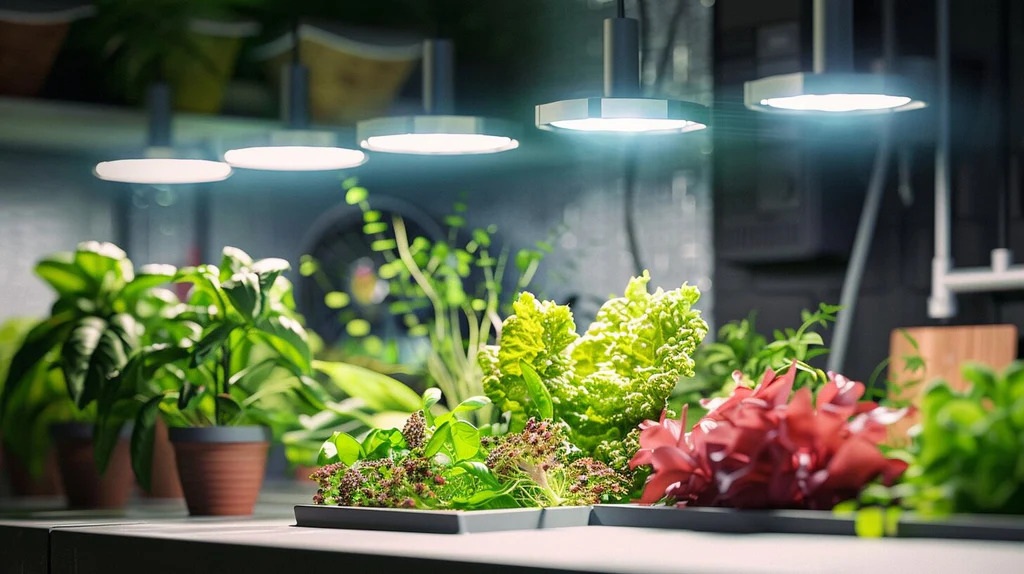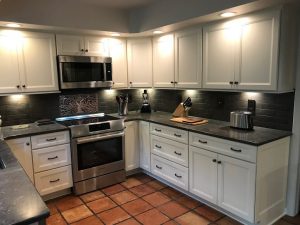
The world of indoor gardening has exploded in recent years, with more and more people discovering the joy of cultivating plants within their homes. Whether you’re a seasoned horticulturist or a budding enthusiast, one of the most crucial aspects of successful indoor growing is choosing the right grow lights. With a plethora of options available, navigating the market can feel overwhelming. This comprehensive guide will illuminate the path, providing you with the knowledge and insights necessary to make informed decisions and empower your indoor garden to thrive.
Understanding the Importance of Grow Lights
Sunlight is the lifeblood of plants, providing the energy they need for photosynthesis, the process by which they convert light into chemical energy to fuel growth and development. When growing indoors, natural sunlight is often limited or unavailable. This is where grow lights step in, acting as artificial suns to provide the necessary light spectrum for your plants to flourish.
Grow lights are designed to mimic the spectral composition of sunlight, emitting wavelengths crucial for photosynthesis and plant growth. By carefully selecting the right grow lights, you can create an optimal indoor environment that enables your plants to reach their full potential, regardless of the natural light available.
Types of Grow Lights
The market offers a variety of grow lights, each with its own strengths and weaknesses. Understanding the different types is essential in choosing the best fit for your specific needs and plant varieties.
- Fluorescent Grow Lights: These are a popular choice for beginners due to their affordability and ease of use. They are available in various forms, including compact fluorescent lights (CFLs) and T5 fluorescent tubes. CFLs are ideal for small-scale growing or seedlings, while T5 tubes offer higher intensity and are suitable for larger setups.
- LED Grow Lights: LED (Light Emitting Diode) grow lights have rapidly gained popularity due to their energy efficiency, long lifespan, and minimal heat output. They offer a wide range of spectral options, allowing for customization based on plant needs. LEDs are available in various forms, including panels, bulbs, and strips, catering to diverse growing setups.
- High-Intensity Discharge (HID) Grow Lights: HIDs are known for their high intensity and penetration, making them suitable for large-scale growing or plants with high light requirements. They come in two main types: Metal Halide (MH) and High-Pressure Sodium (HPS). MH bulbs emit a blue-ish spectrum ideal for vegetative growth, while HPS bulbs produce a red-ish spectrum that promotes flowering and fruiting.
- Induction Grow Lights: Induction lights are a less common but highly efficient option. They utilize electromagnetic fields to excite a gas within the bulb, producing a bright, full-spectrum light. Induction lights are known for their long lifespan and consistent output, making them a viable choice for long-term growth.
Factors to Consider When Choosing Grow Lights
Selecting the right grow lights involves considering several factors that influence their effectiveness and suitability for your indoor garden.
- Light Spectrum: Different plants have varying light requirements throughout their growth cycle. Understanding the concept of the light spectrum and its impact on plant development is crucial. Blue light is essential for vegetative growth, promoting strong stems and healthy leaves. Red light is crucial for flowering and fruiting, stimulating bud development and yield.
- Light Intensity: Light intensity, measured in Photosynthetic Photon Flux Density (PPFD), determines the amount of light reaching your plants. Different plant species have varying light intensity needs. Leafy greens and herbs typically require lower intensity, while flowering and fruiting plants thrive under higher intensity.
- Coverage Area: The coverage area of a grow light determines the size of the growing space it can effectively illuminate. Consider the dimensions of your grow tent or room and choose lights with adequate coverage to ensure even light distribution across your plants.
- Energy Efficiency: Energy consumption is a significant factor to consider, especially for long-term growing. LED grow lights are generally the most energy-efficient option, followed by induction lights. HIDs consume more energy and produce more heat, requiring additional cooling measures.
- Heat Output: Grow lights generate heat, which can affect the temperature and humidity levels within your growing environment. Excessive heat can stress plants and hinder their growth. LEDs produce the least amount of heat, while HIDs generate significant heat, necessitating proper ventilation and cooling.
- Budget: Grow lights come in a wide price range, from budget-friendly CFLs to high-end LED systems. Set a realistic budget and explore options within your price range. Remember that investing in quality grow lights can lead to long-term savings on energy consumption and replacement costs.
Reviews of Popular Grow Lights
To further assist you in your decision-making process, here are reviews of some popular grow lights available on the market:
- Spider Farmer SF-1000 LED Grow Light: This dimmable LED grow light offers full-spectrum coverage and is suitable for various growing stages. It boasts high energy efficiency and a lifespan of up to 50,000 hours. The SF-1000 is ideal for small to medium-sized grow tents or rooms.
- Mars Hydro TS 1000 LED Grow Light: Another popular choice, the Mars Hydro TS 1000 provides a balanced spectrum for both vegetative and flowering stages. It features a compact design and efficient heat dissipation, making it suitable for various growing environments.
- Viparspectra XS1000 LED Grow Light: This budget-friendly LED grow light offers a full spectrum and decent coverage area. It’s a good option for beginners or those on a tight budget, providing adequate light for various plant types.
- Gavita Pro 1700e LED Grow Light: This high-end LED grow light is designed for professional growers and large-scale operations. It offers exceptional intensity, coverage, and spectral control, allowing for precise customization based on plant needs.
- Horticulture Lighting Group HLG 600 Rspec LED Grow Light: This powerful LED grow light is specifically designed for flowering and fruiting plants. It emits a high proportion of red light, promoting robust bud development and maximizing yields.
Remember that these are just a few examples, and numerous other reputable brands and models are available. Research and compare different options based on your specific needs and budget to find the perfect fit for your indoor garden.
Setting Up Your Grow Lights

Once you’ve chosen your grow lights, proper setup is crucial to maximize their effectiveness and ensure optimal plant growth.
- Hanging Height: The distance between your grow lights and plants is crucial. Hanging them too high can result in insufficient light intensity while hanging them too low can cause light burn and stress your plants. Refer to the manufacturer’s recommendations for optimal hanging heights and adjust as needed based on plant response.
- Light Cycle: Plants require a specific light and dark cycle to regulate their growth and development. Most plants thrive on a 16/8 cycle, with 16 hours of light and 8 hours of darkness during the vegetative stage. During flowering, a 12/12 cycle is often recommended to trigger bud development.
- Uniformity of Light: Ensure even light distribution across your growing area to prevent uneven growth and maximize yields. Consider the coverage area of your grow lights and arrange them strategically to avoid dark spots or areas with excessive light intensity.
- Ventilation and Cooling: Proper ventilation and cooling are essential, especially when using high-heat output lights like HIDs. Adequate airflow helps regulate temperature and humidity levels, preventing heat stress and promoting healthy plant growth.
Related: A Gardener’s Guide to Annuals and Perennials: Creating a Stunning Landscape
Frequently Asked Questions (FAQ)
Q: How do I know if my plants are getting enough light?
A: Several signs indicate whether your plants are receiving adequate light. Healthy plants exhibit vigorous growth, strong stems, and vibrant leaf color. If your plants are stretching towards the light source, have pale or yellowing leaves, or are growing slowly, they may need more light.
Q: Can I use regular household bulbs for growing plants?
A: While regular household bulbs emit some light, they lack the specific wavelengths necessary for optimal plant growth. They are not designed for horticulture and may not provide the right balance of blue and red light that plants need to thrive.
Q: How long do grow lights last?
A: The lifespan of grow lights varies depending on the type and quality. LEDs generally have the longest lifespan, lasting up to 50,000 hours or more. HIDs have a shorter lifespan, typically around 10,000 hours. CFLs have the shortest lifespan, averaging around 8,000 hours.
Q: Are grow lights safe to use around pets and children?
A: Most grow lights are safe to use around pets and children when used responsibly. However, it’s essential to take precautions, such as keeping lights out of reach, ensuring proper wiring and grounding, and avoiding direct eye contact with high-intensity lights.
Q: Can I use grow lights for starting seeds?
A: Yes, grow lights are excellent for starting seeds indoors. They provide the necessary light spectrum and intensity for seedlings to germinate and develop strong root systems before transplanting.
Q: How much do grow lights cost to operate?
A: The operating cost of grow lights depends on their wattage, usage hours, and local electricity rates. LEDs are generally the most cost-effective option due to their energy efficiency. You can calculate the estimated operating cost by multiplying the wattage by the daily usage hours and electricity rate.
Conclusion
Choosing the right grow lights is a crucial step toward successful indoor gardening. By understanding the different types of grow lights, considering factors such as light spectrum, intensity, and coverage area, and following proper setup guidelines, you can create an optimal growing environment for your plants to thrive. Remember to research and compare different options, consider your specific needs and budget, and invest in quality grow lights that will serve you well for years to come. With the right tools and knowledge, you can unlock the full potential of your indoor garden and enjoy the rewards of fresh, homegrown produce year-round.



